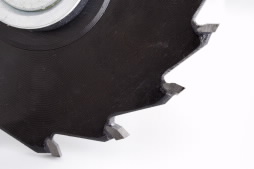EMBARGOED FOR RELEASE
ACS News Service Weekly PressPac: June 19, 2013
Pearly Perfection
“Pearls Are Self-Organized Natural Ratchets”
Langmuir
The mystery of how pearls form into the most perfectly spherical large objects in nature may have an unlikely explanation, scientists are proposing in a new study. It appears in ACS’ journal Langmuir, named for 1932 Nobel Laureate Irving Langumir.
Julyan Cartwright, Antonio G. Checa and Marthe Rousseau point out that the most flawless and highly prized pearls have perhaps the most perfectly spherical, or ball-like, shape among all the objects in nature that are visible without a microscope. Pearls develop as nacre (mother of pearl) and other liquids accumulate around grains of sand or other foreign objects inside certain oysters and other shellfish. But how do pearls grow into such perfect spheres?
The answer, they say, may be relatively simple — with developing pearls having a saw-toothed, or ratchet-like, surface. That texture generates forces that make the pearl turn inside the oyster’s tissues in response to movements in the environment. The result is a spherical build-up of nacre and other textures. Rotating pearls are a perhaps unique example of a natural ratchet, the scientists say.
The authors acknowledge funding from the Spanish Ministerio de Ciencia e Innovacion and the European BioMineralix.
Contact
Science Inquiries: Michael Woods, Editor, 202-872-6293
General Inquiries: Michael Bernstein, 202-872-6042


